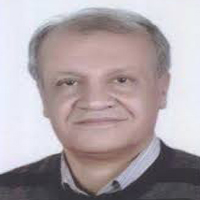Reviewing the concept of healthy communities in traditional neighborhoods of Iran (Case study: Imamzade Yahya neighborhood of Tehran)
Author(s):
Abstract:
Introduction
Today، in developed countries the harmful consequences of modern urban development and urban sprawl phenomenon on the health of human beings is known. In this regard، attention on revitalizing urban neighborhoods and emphasizing their role in urban planning policies to enhance social capital and self-sufficient and walkable neighborhoods is important. In the majority of Traditional neighborhoods، you can see adherence of physical system to social system، possibility of face to face interaction، and proximity to market centers، relatively good access to public transport services، the low permeability of the access network for the riding، which are the capabilities of traditional neighborhoods toward achieving a healthy community. The current lack of attention to unique features of traditional neighborhoods has led to physical exhaustion، migration and decline in health indicators. Thus، continuing the current condition is not only a serious threat against the health of residents but also lead to the loss of opportunities for achieving sustainable development. Theoretical bases: Researches of the World Health Organization indicate that in addition to age، sex and genetic variables that have a definite impact on health، personal factors، lifestyle، social effects and the local environment، workplace and general economic، social، environmental and cultural status have a major impact. Scientific studies also show that physical and mental health of people in urban neighborhoods، as the dual physical and social concepts which are formed as a result of urban planning decisions، is strongly influenced by its characteristics such as housing conditions، environmental quality، function of land uses and transportation network and the way residents perceive the environment. Thus، urban planning with different areas of interventions can play an important role in improving health indicators in an urban neighborhood. Discussion
In this article، in order to explore the health system and its indicators in urban neighborhoods، after auditing the conceptual model and identifying the structures affecting the health، which are derived from theoretical considerations around issue، components resulting from the conceptual model in the traditional neighborhood of Imamzade Yahya، which is one of the neighborhoods of the historic fabric of Tehran، are assessed. Given the importance of subjective indicators of environment in health and lack of health statistics and information at local scale in Iran، a questionnaire was designed to assess the health of Imamzade Yahya neighborhood’s residents. Results
show the interconnected relation between physical- environmental and social indicators of health including quality of housing، neighborhood facilities and sense of belonging to neighborhood، safety perception of residents in the neighborhood of Imamzade Yahya. Another result of the study shows low level of resident’s mobility and physical activity despite mixed uses and the low permeability of the transportation network for riding، which can be caused by physical exhaustion، lack of local facilities and attractions for residents and safety and security of the neighborhood and lack of separate pedestrian and bicycle lanes and numerous barriers to walking out. Another finding suggests the desirability of social indicators of health in this area، despite the possibility of face to face contacts and physical system complementation of the social system which might be caused by the decrease in social cohesion and bonds within neighborhoods and migrant sending from neighborhood and lack of public realms in it to shape social relations. Conclusion
Findings of this study indicate the importance of physical and social environment of neighborhoods on population health. According to the criteria listed for a healthy neighborhood and according to the case study، in terms of the health system، we cannot distinguish between new and traditional neighborhoods and several factors and indicators are effective in creating healthy neighborhoods. Although the traditional neighborhoods of Iran are in line with the health system، due to physical and social deterioration، they require special attention by the institutions of urban management، in order to achieve sustainable development which encourages urban sprawl.Keywords:
Language:
Persian
Published:
Journal Urban - Regional Studies and Research, Volume:5 Issue: 17, 2013
Pages:
1 to 20
magiran.com/p1166207
دانلود و مطالعه متن این مقاله با یکی از روشهای زیر امکان پذیر است:
اشتراک شخصی
با عضویت و پرداخت آنلاین حق اشتراک یکساله به مبلغ 1,390,000ريال میتوانید 70 عنوان مطلب دانلود کنید!
اشتراک سازمانی
به کتابخانه دانشگاه یا محل کار خود پیشنهاد کنید تا اشتراک سازمانی این پایگاه را برای دسترسی نامحدود همه کاربران به متن مطالب تهیه نمایند!
توجه!
- حق عضویت دریافتی صرف حمایت از نشریات عضو و نگهداری، تکمیل و توسعه مگیران میشود.
- پرداخت حق اشتراک و دانلود مقالات اجازه بازنشر آن در سایر رسانههای چاپی و دیجیتال را به کاربر نمیدهد.
In order to view content subscription is required
Personal subscription
Subscribe magiran.com for 70 € euros via PayPal and download 70 articles during a year.
Organization subscription
Please contact us to subscribe your university or library for unlimited access!



